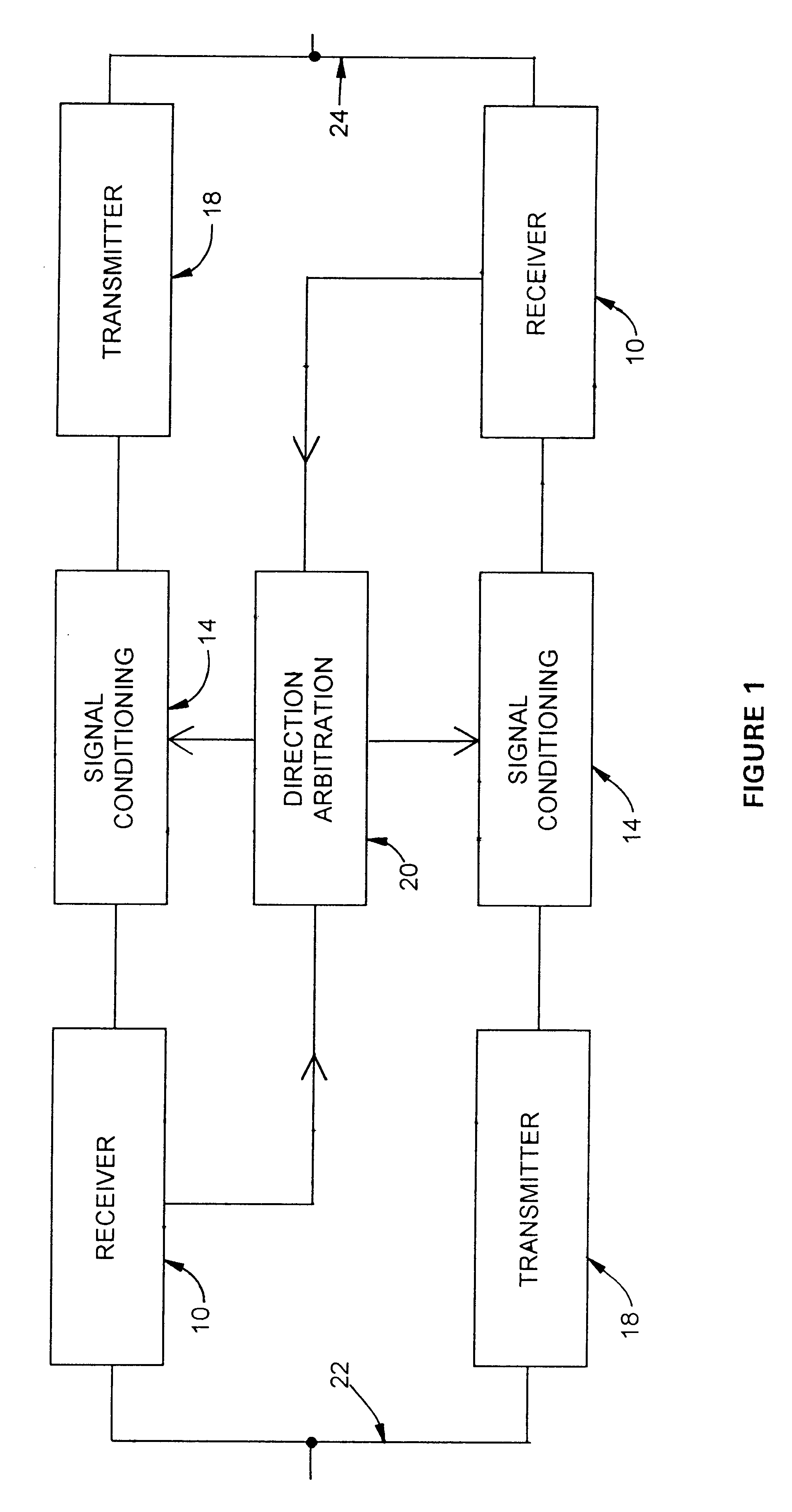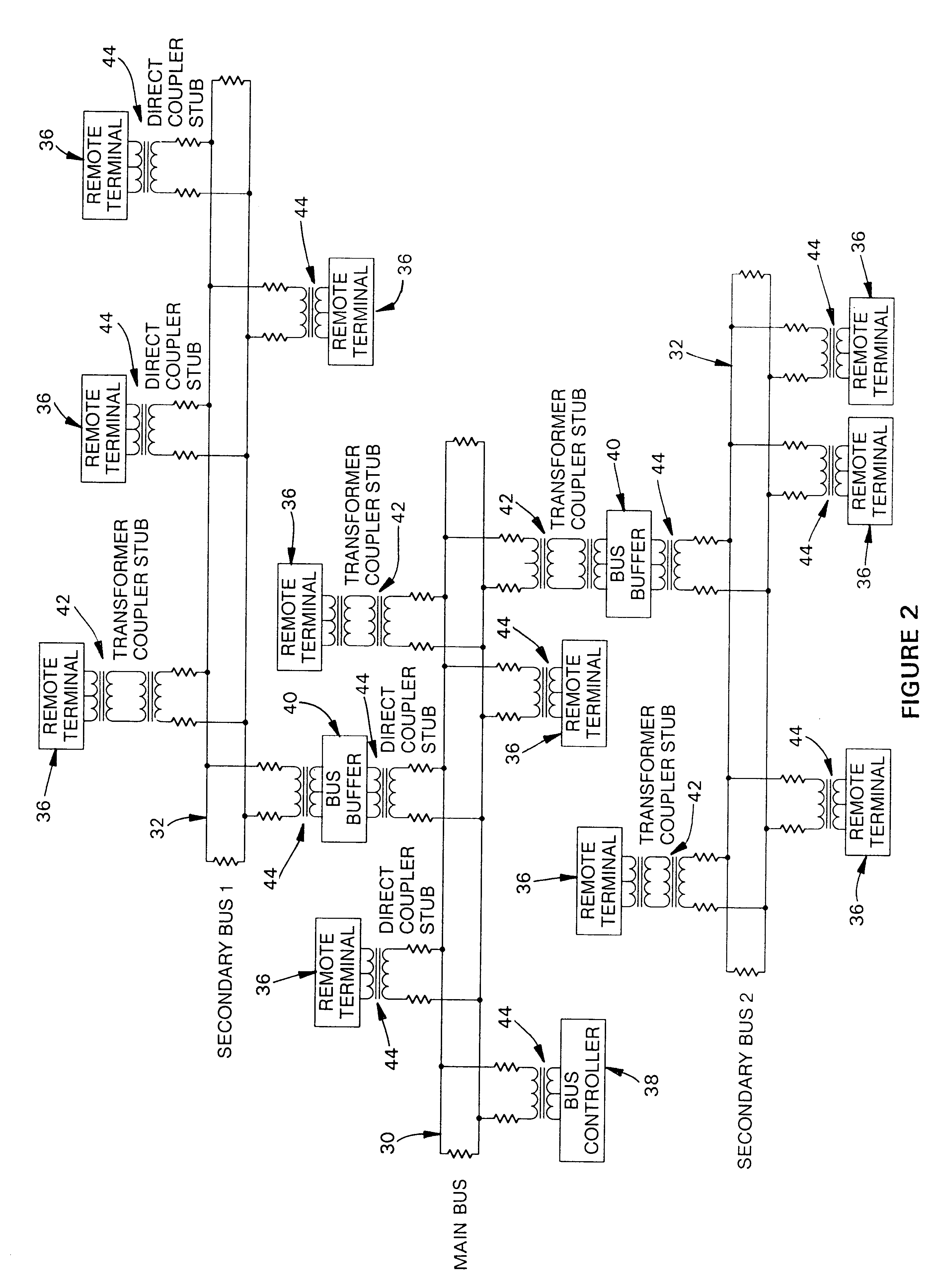MIL-STD-1553 buffer/driver
a buffer/driver and buffer technology, applied in the field of mil-std-1553 buffer/driver, can solve the problems of high data latency and messaging complexity, system will not tolerate an additional signal propagation delay of more than 2 microseconds, and bus performance to become marginal or undependabl
- Summary
- Abstract
- Description
- Claims
- Application Information
AI Technical Summary
Benefits of technology
Problems solved by technology
Method used
Image
Examples
Embodiment Construction
FIG. 1 is a block diagram of an embodiment of the present invention. This new device is symmetrical: data may flow from a first bus 22 to a second bus 24, or data may flow from a second bus 24 to a first bus 22. During operation, one of two receiver circuits 10 accepts Manchester II bipolar signals from a 1553 data bus and detects positive and negative portions of the Manchester II signal input that exceed a specified minimum magnitude. One of two signal-conditioning circuits 14 then reconstitutes the incoming signal and prepares the signal for one of two transmitters 18 with the time spacing of zero-crossings corrected. Direction arbitration logic 20 detects the presence of bus controller and remote terminal signals, determines their direction, and arbitrates bus direction so that signals may be transmitted through the buffer / driver in either direction.
FIG. 2 shows the electrical interconnection of several buses using the present invention in a typical application. In this diagram,...
PUM
 Login to View More
Login to View More Abstract
Description
Claims
Application Information
 Login to View More
Login to View More - R&D
- Intellectual Property
- Life Sciences
- Materials
- Tech Scout
- Unparalleled Data Quality
- Higher Quality Content
- 60% Fewer Hallucinations
Browse by: Latest US Patents, China's latest patents, Technical Efficacy Thesaurus, Application Domain, Technology Topic, Popular Technical Reports.
© 2025 PatSnap. All rights reserved.Legal|Privacy policy|Modern Slavery Act Transparency Statement|Sitemap|About US| Contact US: help@patsnap.com



